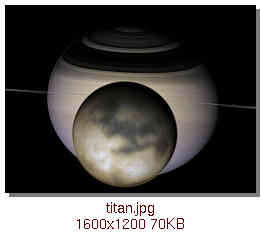t00fri wrote:You seem to adhere to the credo that we should refer to visible light all the time. For me this is a rather artificial limitation, since there are so many highly valuable/instructive data in other wavelength bands. So no LOK situation whatsoever!
No, my credo is simply that our baseline, default setting should
consistently be to show people what things really
look like, wherever that's possible. Behind that, I'm very happy for people to have all sorts of other "eyes" available to them if they choose to deploy those options.
t00fri wrote:In order to achieve real progress with such a more challenging task, we inevitably have to merge all our diverse know how and DISCUSS actively.
Some discussion points, then:
1) I think that some sort of waveband-of-vision slider, though it would be a fine thing, is unimplementable for lack of data in many instances and prohibitive file sizes where all data are available. So I think we'd need to have just a simple range of specified wavebands, perhaps as alternate textures.
2) But what do we mean by "infrared"? Just the single wavelengths of the Titan views, or the various false-colour composites that are available for other objects?
3) Can we achieve any sort of consistency in the wavebands used for our "infrared" textures? I think this is impossible, since the interesting waveband to observe Titan is a boring waveband for most other places, and most likely has never been used. So do we then have a mishmash of false colour images from various wavebands, and lump them all together as simple "infrared" (of various sorts)? Can we standardize the false colours used by reprocessing the available images? Maybe, but I don't think universally without dumping a lot of detail.
4) As you say, what do we do when no data are available? If we agree some false colour conventions (shades of red for IR, violet for UV), then maybe anything without a defined texture in that waveband could be shaded a uniform bland version of the false colour. But as soon as we adopt a colour convention in this way, we lose some of the waveband detail that we might otherwise be able to display. However, since that waveband detail is likely to vary from object to object (see above), which introduces an inconsistency in display, perhaps we wish to supress it anyway.
t00fri wrote:Did you really download my most recent clouds addendum??
I suspect not, from what you say. I'll go look.
t00fri wrote:I put tentatively 3 km as the CloudHeight which I took from a recent ESA caption. But no, there is no solid info, I think.
Cloud
thickness is another problem, isn't it? The dense haze may extend a long way below 40km, but won't make it much higher than the tropopause. So Celestia needs some way to specify a lower and upper bound to clouds.
Grant


